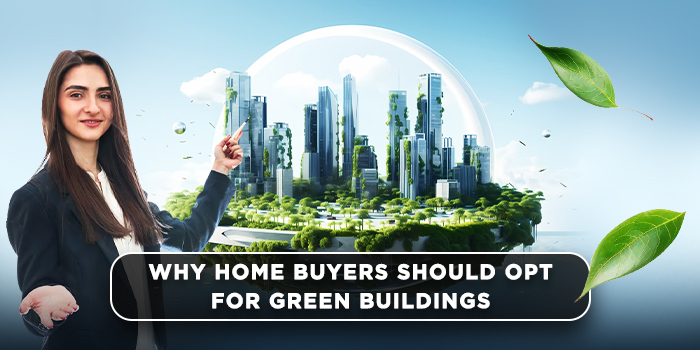The vagaries of climate change, an exponential rise in urbanization and an ever-escalating demand for energy have all combined to add to the clamour for more and more sustainable buildings around the world, and the Indian realty sector is no exception. The chorus for green buildings and sustainable living continues to get louder by the day.

So, what is a sustainable building? Sustainable construction is a method of building that minimizes harm to the environment. It’s not only about being energy-efficient, such eco-friendly homes have intelligent design, use sustainable materials and new-age technologies to ensure minimum harm comes to the environment by reducing waste, saving water and cutting energy use.
The number of real estate projects that secured a LEED certification (an approval system for eco-friendly buildings) last year crossed 5000, according to a recent survey, underlining the growing trend towards sustainable construction. This green switch is clearly driving significant growth in the Indian realty sector, with an average growth of 6%-plus forecast till 2026 at least.
Here are some methods of sustainable construction:
# Using solar power: Green building technology uses solar energy in a big way. While solar panels can be used to turn the sun’s energy into electricity, passive solar energy can also be used to keep the buildings warm in cold-climate zones, by intelligent placing of windows.
# Using biodegradable materials: Green buildings use materials like bamboo, wood, straw, cork, etc. which break down without causing harm to the environment.
# Using insulation: Eco-friendly construction uses recycled materials like old denim or paper for insulation to keep buildings warm or cool, thus helping save energy.
# Using intelligent roofing: Sustainable construction uses cool roofs that reflect sunlight, thus keeping buildings cooler. This means less need for air-conditioning and reduction of greenhouse gases emission.
# Using smart water tech: Saving and wise management of water is a key pillar of green buildings. Smart technologies like rainwater harvesting, reuse of greywater and using the right fixtures are all adopted to achieve this.
# Ensuring optimum indoor air quality: In order to control the indoor environment, green buildings use ingredients that don’t emit toxic chemicals while controlling moisture levels, thus ensuring the air inside is safe and healthy.
# Using smart design: A passive house design can help manage temperature without using gadgets for cooling or heating. This can result in up to 90% energy savings.
What are the rewards of sustainable construction?
# Environment protection: It reduces impact on the environment by reducing pollution and waste and wise use of water and energy.
# Boosts economy: By creating more jobs and adding traction to the realty market, it provides a shot in the arm to the economy.
# More resilient: Green buildings offer better protection against climate change and extreme weather events.
# Promotes good health: Thanks to the superior indoor air quality and access to more natural light, green buildings are healthier to live in.
# Cutting-edge tech: Use of more evolved construction technology makes sustainable construction smarter and more environment-friendly.
# Better performance: Green buildings easily outperform their conventional counterparts by using less power and water and reducing waste and pollution.
Disclaimer : Information contained and transmitted by us are for information purposes only. All views and/or recommendations are those of the concerned author personally and made purely for information purposes. Nothing contained in the articles should be construed as business, legal, tax, accounting, investment or other advice or as an advertisement or promotion of any project or developer or locality. Pioneer Property Management Ltd. does not offer any such advice. No warranties, guarantees, promises and/or representations of any kind, express or implied, are given as to (a) the nature, standard, quality, reliability, accuracy or otherwise of the information and views provided in (and other contents of) the articles or (b) the suitability, applicability or otherwise of such information, views, or other contents for any person’s circumstances. We shall not be liable nor shall be held responsible in any manner for any action taken based on the published information (whether in law, contract, tort, by negligence, products liability or otherwise) for any losses, injury or damage (whether direct or indirect, special, incidental or consequential) suffered by such person as a result of anyone applying the information (or any other contents) in these articles or making any investment decision on the basis of such information (or any such contents), or otherwise. The users should exercise due caution and/or seek independent advice before they make any decision or take any action on the basis of such information or other contents.